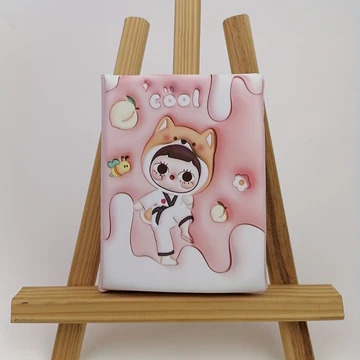Are Japanese Notebooks Better?

Japanese notebooks have developed quite a reputation among stationery lovers, students, and professionals alike. They’re known for their craftsmanship, attention to detail, and quality. But are Japanese notebooks actually better than others, or is it just hype? Let’s dive in and explore what makes Japanese notebooks stand out and why they might be worth choosing over others.
If you’re someone who loves the feel of smooth paper when writing or you’re just looking for a notebook that will last and perform well, you may have heard about Japanese notebooks. They have become popular around the world for good reason. Japanese stationery companies put a lot of care into their products, focusing on user experience and craftsmanship. So, what exactly makes Japanese notebooks special? In this article, we’ll look at why you might want to choose a Japanese notebook, the types available, the benefits they offer, and some steps to make sure you get the best one for your needs.
Why Choose Japanese Notebooks?
There’s no denying that there are plenty of options when it comes to notebooks. But here’s why Japanese notebooks stand out:
1. Superior Paper Quality: One of the key reasons people rave about Japanese notebooks is the paper quality. Japanese paper is usually smoother and thinner, yet surprisingly resistant to bleed-through. This means that even with fountain pens, gel pens, or markers, the ink stays on the page without bleeding or ghosting (when you can see the writing from the other side of the page).
2. Attention to Detail: Japanese brands are known for their craftsmanship and attention to detail. From the way the notebook is bound to the design of the covers and the layout of the pages, everything feels well thought out. Whether it’s the way a notebook opens flat on your desk or how the pages turn easily without tearing, it’s clear a lot of care goes into making them.
3. Variety of Styles: Whether you’re a fan of grid, dot, lined, or blank pages, Japanese notebooks offer a huge variety to choose from. Each type caters to different writing, drawing, or note-taking preferences. On top of that, the designs can range from minimalist to beautifully artistic, giving you a lot of options to express your style.
4. Sustainability: Many Japanese stationery companies focus on using eco-friendly paper and processes. This can be a huge plus for anyone looking to reduce their environmental impact.
Types of Japanese Notebooks
There isn’t just one type of Japanese notebook. They come in many forms, each tailored for different uses and preferences. Here are a few of the most popular types:
1. Midori Notebooks: Midori is one of the most famous names in Japanese stationery. Their notebooks often feature MD paper, which is beloved for its smooth texture and ability to handle fountain pens without feathering or bleeding. Midori notebooks are often simple and minimalistic in design, which makes them great for professionals and creatives alike.
2. Kokuyo Campus Notebooks: This brand is a staple in Japanese schools and offices. Kokuyo Campus notebooks are known for their lightweight paper, perfect for taking lots of notes without creating a bulky notebook. The ruling on the pages often has subtle details like guide marks to keep your handwriting neat, which is a thoughtful touch.
3. Apica Notebooks: These are another highly popular option in Japan, particularly in academic settings. Apica notebooks often have elegant, vintage-inspired covers and are available in various paper types. They are durable and lightweight, perfect for everyday use.
4. Stalogy Notebooks: Stalogy notebooks are minimalist in design but versatile in use. They’re popular among bullet journal enthusiasts because of their flexible layout. The thin, high-quality paper is perfect for note-taking and creative journaling.
5. Life Notebooks: Life notebooks offer a luxurious feel with high-quality paper that works well with a wide variety of writing instruments. Their aesthetic is often more classic, with beautiful designs and durable construction.
Benefits of Using Japanese Notebooks
Here are some of the reasons people fall in love with Japanese notebooks:
1. Excellent Paper Quality: Japanese notebooks often feature incredibly smooth, thin paper that feels great to write on. Despite being thin, the paper is remarkably resistant to ink bleed-through, making it perfect for fountain pens, markers, and other heavy-ink pens.
2. A Wide Variety of Formats: Whether you’re looking for a notebook for sketching, journaling, or note-taking, you’ll find a format that fits your needs. The ruling is often thoughtfully designed, with grid and dot patterns being especially popular for those who like structure and freedom.
3. Durability and Design: Japanese notebooks tend to be well-constructed. Whether it’s the stitching, binding, or cover design, they are built to last. Many feature covers that are resistant to wear and tear, which means they will look good even after months of use.
4. Eco-Friendliness: Many Japanese brands focus on sustainability, which means you’re often getting a product that’s kinder to the environment. Whether it’s the paper sourcing or the production process, there’s a lot of emphasis on minimizing the environmental footprint.
5. Innovative Features: Japanese notebooks often come with cool little features you wouldn’t find elsewhere. For example, some notebooks use acid-free paper, ensuring that your notes won’t fade or yellow over time. Others have perforated pages for easy removal, or even grid patterns that allow for both writing and drawing on the same page.
Steps to Choosing the Right Japanese Notebook
Not all Japanese notebooks are the same, and picking the right one depends on your specific needs. Here are a few things to consider:
1. Determine Your Usage: Think about how you plan to use the notebook. Are you taking notes, journaling, or drawing? For note-taking, a lined or grid notebook might be your best bet. For creative projects or bullet journaling, you might want to consider a dot grid or blank notebook.
2. Consider Paper Quality: If you use a fountain pen or gel pen, paper quality is crucial. Look for brands like Midori, Life, or Stalogy, which offer paper specifically designed for smooth writing and minimal bleed-through.
3. Size Matters: Japanese notebooks come in a variety of sizes. If you’re always on the go, a smaller, pocket-sized notebook might be the most convenient. For school or work, you might prefer an A5 or B5-sized notebook to give you more room to write.
4. Durability: If you’ll be carrying the notebook with you all the time, make sure it has a sturdy cover and durable binding. Hardcover notebooks tend to hold up better in backpacks or purses.
5. Aesthetic and Design: Lastly, don’t forget about the design. Japanese notebooks come in many styles, from simple and minimalist to colorful and creative. Choose one that reflects your personal taste and makes you excited to use it.
Conclusion
So, are Japanese notebooks better? If you’re someone who values quality, attention to detail, and thoughtful design, Japanese notebooks are definitely worth considering. Their superior paper quality, durability, and variety of styles make them a top choice for students, professionals, and creatives alike. The care that goes into their production is clear from the first time you pick one up. While they may be a little pricier than standard notebooks, the benefits of having a notebook that lasts longer and performs better are well worth the investment.
FAQs
Are Japanese notebooks more expensive than regular notebooks?
Yes, Japanese notebooks tend to be more expensive than standard notebooks. However, the extra cost is usually justified by the higher-quality materials, durability, and better overall performance.
Can I use fountain pens on Japanese notebooks?
Absolutely! In fact, Japanese notebooks are often prized for their ability to handle fountain pens without bleeding or feathering. Brands like Midori and Life are especially known for their fountain pen-friendly paper.
Are Japanese notebooks available worldwide?
Yes, many Japanese notebook brands are available online and in specialty stationery stores worldwide. You can easily find them on websites like Amazon or through dedicated stationery shops.
Which Japanese notebook is best for bullet journaling?
Stalogy and Midori notebooks are popular choices for bullet journaling because of their flexible layouts and high-quality paper that works well with various pens and markers.
Do Japanese notebooks use eco-friendly materials?
Many Japanese stationery companies prioritize sustainability and use eco-friendly paper and processes in their notebooks. Brands like Kokuyo and Midori are known for their efforts in this area.

